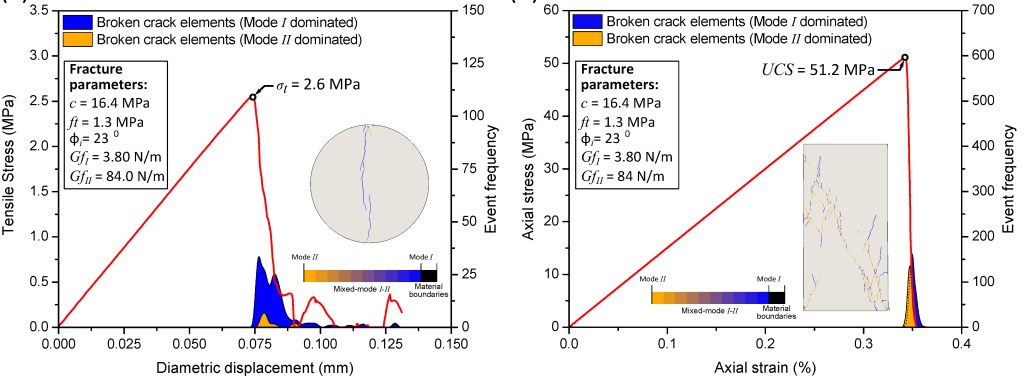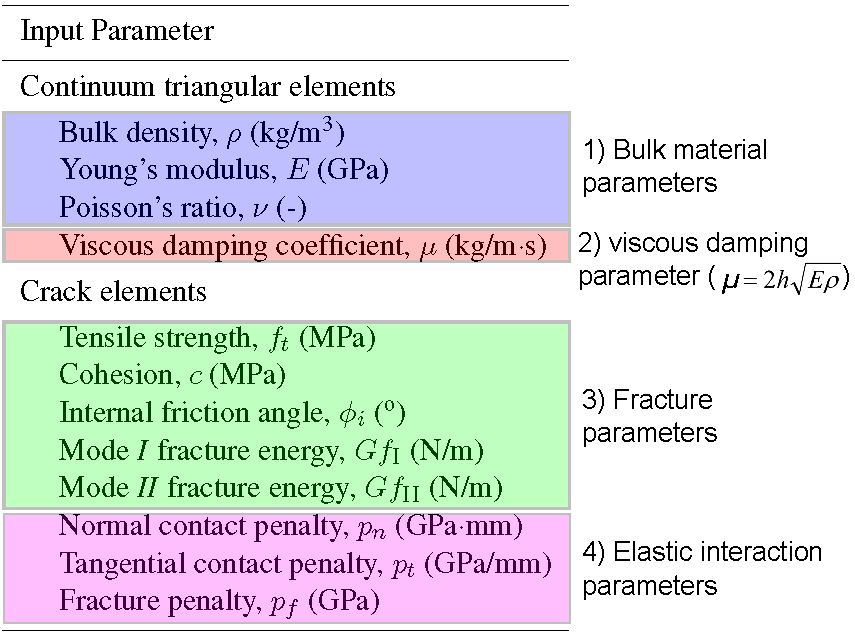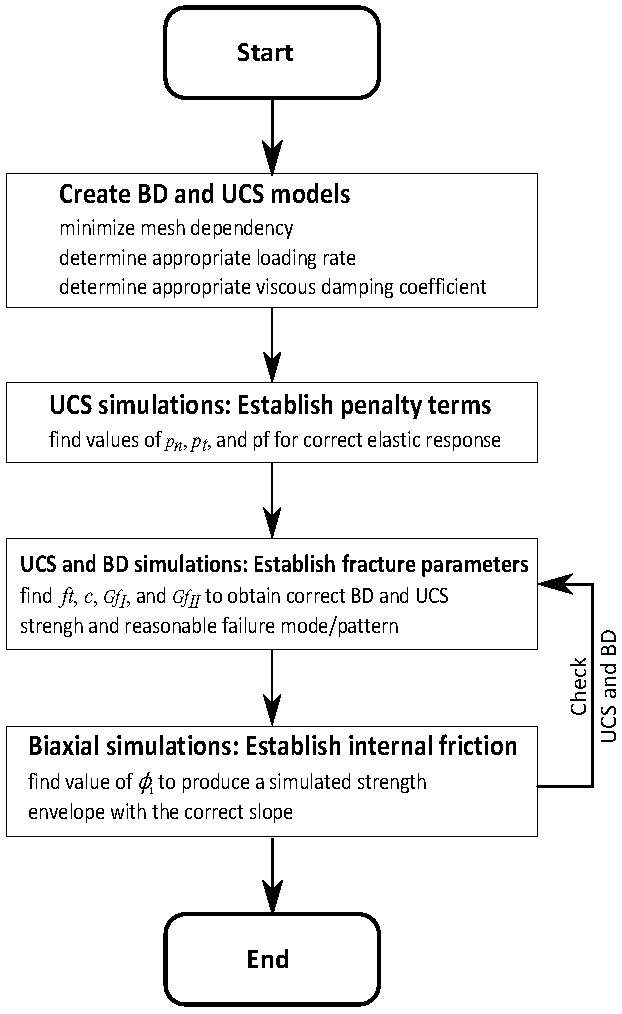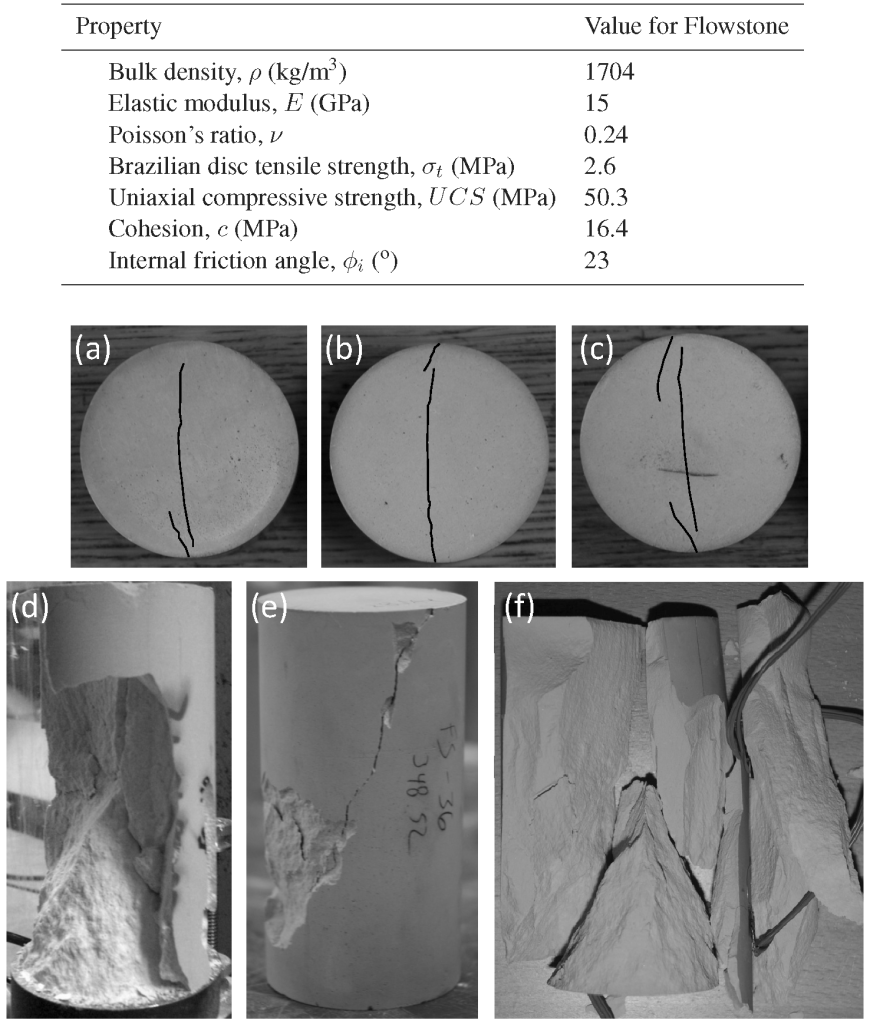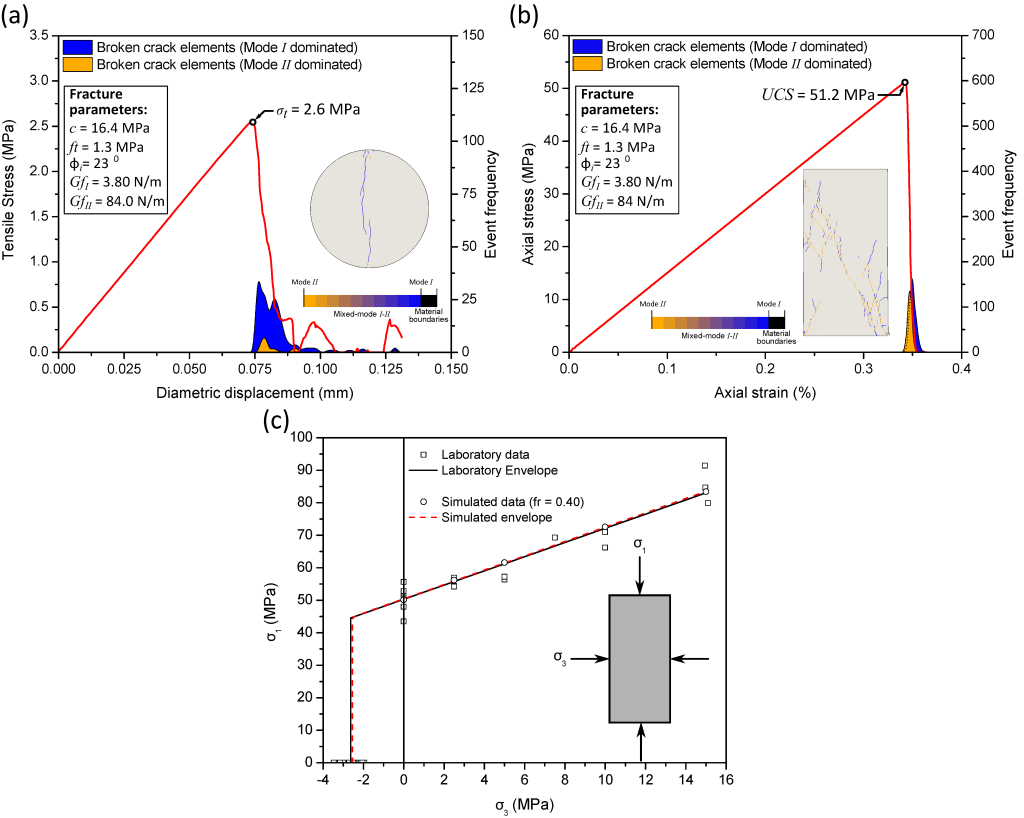The ability to capture increasingly complex behaviours within a numerical simulation is typically accompanied by an increase in the number of input parameters that must be specified. Inevitably, with additional physics come additional parameters to govern these physics. Critics of numerical modelling often cite the uncertainty associated with parameter selection as a reason to avoid advanced numerical methods in favour of highly-simplified techniques.
While it is agreed that simple techniques, such as linear-elastic FEM modelling, can be very useful in assessing some rock engineering problems, the necessary simplifications significantly restrict its applicability. It is argued that with proper calibration advanced numerical methods, including that implemented in our FEMDEM code, can provide valuable and unmatched insight regarding complex rock engineering problems, including: block cave mining, slope/dam stability, Excavation Damaged Zone (EDZ) formation, and Hydraulic Fracturing (HF).
Material behaviour in a FEMDEM simulation is controlled by the input parameters listed below. At first, the sheer number of parameters that must be specified may seem overwhelming. However, it is possible to obtain a set of values for these parameters that can reliably reproduce the behaviour of different geomaterials under varying conditions. To do so, a systematic and comprehensive calibration procedure that has recently been established can be followed (Tatone 2014; Tatone and Grasselli 2014). The overall objective of the procedure is to find a set of input parameters that simultaneously result in the proper emergent triaxial strength envelope, both in terms of the strength magnitude and the associated failure modes and fracture patterns.
FEMDEM input parameters (N.B. units of penalty terms are those for Y-Geo).
By dividing the FEMDEM input parameters into four groups: 1) bulk material parameters, 2) viscous damping parameters, 3) fracture parameters, and 4) elastic interaction parameters a series of Unconfined Compressive Strength (UCS), Brazilian Disc Strength (BDS), and biaxial strength tests simulations can be utilized to systematically find values for each parameter. The overall procedure is illustrated in the flow chart below. The details pertaining to each step of this procedure are not discussed here, but can be found in Tatone (2014) and Tatone and Grasselli (2014).
Flow chart for the calibration procedure.
All that is needed to proceed with the above calibration procedure are routine laboratory testing results for the material to be simulated. These data include the mean results of UCS, BDS, and triaxial testing and corresponding images of the failed specimens. An example of the necessary test data and images for a limestone-like material are provided below.
Material properties and failed specimen images needed for calibration.
Using the above calibration procedure, the FEMDEM input parameter values for the limestone-like material were established. The simulated stress-strain, stress-displacement and fracture patterns obtained using these parameter values are shown below. Comparing the simulation results to the laboratory testing results indicates that a strong similitude can be achieved with FEMDEM. Therefore, despite the added number of input parameters relative to simple elastic FEM modelling, a set of values that produced the expected material behaviour in tension and compression can still be obtained. This set of parameter values can subsequently be used for more complex forward modelling (i.e., different loading conditions or geometry).
Calibration results showing good match between laboratory and simulated (a) UCS results, (b) BDS results, and (c) triaxial/biaxial results (N.B. fr = coefficient of friction).
References
- Tatone BSA (2014). “Investigating the evolution of rock discontinuity asperity degradation and void space morphology under direct shear”. Ph.D. Thesis, University of Toronto. Toronto, Canada.
- Tatone BSA, Grasselli G (2014). “A calibration procedure for laboratory-scale HybridFinite-Discrete Element simulations using Y-Geo”. (Submitted to the International Journal of Rock Mechanics and Mining Sciences, June 2014).
